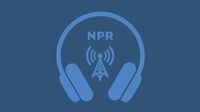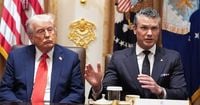On Friday, October 24, 2025, the Trump administration announced a dramatic escalation of its ongoing campaign against alleged drug traffickers in the Caribbean and Pacific, deploying the world’s largest aircraft carrier—the USS Gerald R. Ford—and its strike group to waters off South America. This move, which the Pentagon says is aimed at dismantling transnational criminal organizations and countering so-called narco-terrorists, has sent ripples of unease from Washington to the small fishing villages of Trinidad and Tobago.
Chief Pentagon spokesperson Sean Parnell explained in a statement that the deployment would “bolster U.S. capacity to detect, monitor, and disrupt illicit actors and activities that compromise the safety and prosperity of the United States homeland and our security in the Western Hemisphere.” The operation, he added, would “enhance and augment existing capabilities to disrupt narcotics trafficking and degrade and dismantle TCOs.” According to The Hill, the USS Gerald R. Ford, previously stationed in the Mediterranean and last seen in Croatia earlier this month, is now the flagship of this high-profile counternarcotics push.
The scale of the operation is unprecedented. Over the past week, U.S. forces have struck at least 43 boats in the Caribbean Sea, off the coast of Venezuela, and in the Eastern Pacific. The Trump administration has labeled all those killed as “narco-terrorists,” but has yet to provide concrete evidence that the vessels were carrying drugs or were bound for the United States. In fact, as The Washington Post reported, the routes most frequently targeted off Venezuela’s coast are not typically used for fentanyl trafficking to the U.S.; most synthetic fentanyl enters the country from Mexico, often smuggled by American citizens.
President Donald Trump has been unflinching in his rhetoric. In September, he claimed, “Every boat kills 25,000 on average — some people say more. You see these boats, they’re stacked up with bags of white powder that’s mostly fentanyl and other drugs, too.” Yet, as critics have pointed out, neither the administration nor the Pentagon has shared evidence to substantiate these claims. The American Civil Liberties Union’s Brett Max Kaufman has described the bombings as “extrajudicial killings that are flagrantly illegal under both domestic and international law.” Human rights groups have echoed these concerns, drawing uncomfortable parallels to the Obama-era “signature strikes” program, which also relied on vague behavioral profiles rather than confirmed identities to target suspected terrorists.
Since taking office in 2017, Trump moved quickly to loosen the rules constraining U.S. drone strikes, increasing both their frequency and the opacity surrounding civilian casualties. Unlike his predecessor, President Joe Biden, who signed a classified policy in 2022 limiting counterterrorism drone strikes outside conventional war zones, Trump’s administration has not reported any official policy shift or internal debate about the current campaign against boats far outside any declared combat zone.
On Thursday, October 23, two B-1 Lancer bombers flew near Venezuela’s coast, further escalating tensions. Trump dismissed reports of their presence as “false,” but added, “we’re not happy with Venezuela for a lot of reasons. Drugs being one of them.” The operation’s broader context is clear: it’s as much about pressuring Venezuelan President Nicolás Maduro, whom U.S. officials call “illegitimate,” as it is about drug interdiction. Maduro, for his part, pleaded for calm, stating, “Yes peace, yes peace forever, peace forever. No crazy war, please.”
The American military presence is not limited to ships and bombers. The USS Gravely, an Arleigh Burke-class destroyer, is set to dock in Port of Spain, Trinidad and Tobago, from October 26 to 30, coinciding with joint exercises between the 22nd U.S. Marine Expeditionary Unit and the Trinidad and Tobago Defense Force. The Ministry of Foreign and Caricom Affairs noted that these visits “strengthen U.S.-Trinidad and Tobago military-to-military cooperation through expert exchanges focused on core infantry tactics, maintenance procedures, and advanced medical capabilities.”
But for many in Trinidad and Tobago, these assurances ring hollow. Since September, the U.S. military buildup and strikes on alleged drug boats in nearby waters have left the population on edge and searching for answers. NPR’s Eyder Peralta reported from Las Cuevas, a fishing village perched on the Caribbean cliffs, where local fisherman Renute Roberts described a new atmosphere of fear. “A lot of people not going out to fish,” he said. The Pentagon has released grainy videos showing U.S. forces blowing up wooden vessels—boats that Roberts and others insist are not used by drug runners. “When they’re making a run here, and, like, drugs—running drugs, they don’t go with more than three person,” Roberts explained, noting that the boats targeted often carry six or more people, an unlikely configuration for smugglers seeking to maximize cargo.
Roberts’ concerns go beyond lost income. At night, when he ventures out to fish, he sometimes hears the ominous buzz of drones overhead. “That’s scary. Once you see a drone, you just leave away from there,” he admitted. The fear isn’t theoretical. Friends and families in Trinidad and Tobago have already lost loved ones. One family in Las Cuevas mourns the disappearance of Chad Joseph, a fisherman who vanished after a U.S. strike on a boat returning from Venezuela. His aunt, Lynette Burnley, described the family’s anguish: “As every day go by, it’s more and more and more pain.” Neither the Trinidadian nor U.S. governments have offered explanations, leaving families like Joseph’s in a state of limbo. His grandmother, Christine Clement, still clings to hope: “I hoping and praying that he will come someday.”
Political analyst David Abdulah, speaking to NPR, questioned whether such overwhelming military force was truly necessary. “You don’t need that kind of military asset to deal with some drug runners with some speedboats,” he argued, warning that the Caribbean, once a battleground for colonial powers, could again become a theater of conflict.
Back in Washington, the strikes have ignited debate but little oversight. Charles Young, Trump’s nominee for Army general counsel, confirmed to the Senate that the Office of Legal Counsel had produced a memo justifying the operation, though its reasoning remains secret. Senator James Risch, who chairs the Senate Foreign Relations Committee, told reporters he has no plans to hold hearings. While a Senate vote is scheduled to disapprove of the strikes and any military action towards Venezuela, the House remains in recess, making legislative intervention unlikely. Trump himself has dismissed the need for formal war declarations, saying, “I don’t think we’re going to necessarily ask for a declaration of war. I think we are going to kill people that are bringing drugs into our country, OK? We are going to kill them, you know? They are going to be, like, dead.”
As the U.S. flexes its military might in the Caribbean, the consequences are being felt most acutely by those living and working along its shores. With families grieving, fishermen fearful, and governments silent, the region faces an uncertain future as the line between counternarcotics operation and undeclared war grows ever more blurred.


